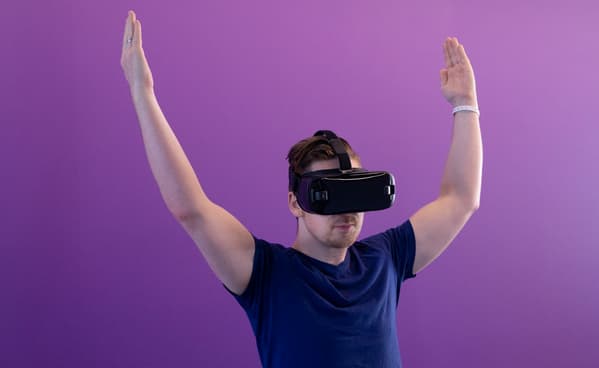Introduction: From Science Fiction to Reality
What was once the domain of science fiction has now become a rapidly growing part of our daily lives: Virtual Reality (VR). With the power to transport users to digitally created worlds, VR offers immersive experiences that feel strikingly real. Whether you’re exploring the surface of Mars, performing surgery, or walking through ancient ruins, VR enables us to interact with digital environments in profoundly new ways.
In recent years, advancements in VR technology have taken it from clunky headsets and limited applications to sleek, consumer-ready devices used in gaming, education, therapy, architecture, and more. This article explores how VR works, where it’s being used today, and what the future might hold for this transformative technology.
How Virtual Reality Works: The Tech Behind the Experience
Virtual Reality immerses users in a computer-generated environment that can mimic or go beyond the physical world. The core components that make VR possible include:
1. Head-Mounted Displays (HMDs)
The most visible part of VR is the headset. Devices like the Meta Quest, HTC Vive, and PlayStation VR include screens that present stereoscopic images—slightly different views for each eye—to create depth and realism. Modern HMDs also track the movement of your head to change the perspective as you turn or tilt, enhancing the sense of presence.
2. Motion Tracking
To interact with virtual environments naturally, VR systems use sensors, cameras, and accelerometers to track the user’s movement in space. Controllers with haptic feedback simulate touch and resistance, making the interaction even more lifelike.
3. Audio and Sensory Feedback
Spatial audio plays a key role in making the experience immersive. By simulating sound direction and distance, VR can replicate the way we hear in real life. Some advanced systems even incorporate treadmills or gloves for full-body input.
4. Software and Platforms
The digital environments are created using powerful 3D engines like Unity and Unreal Engine. These platforms allow developers to build intricate worlds with realistic physics, lighting, and AI interactions.
While the tech continues to evolve, the goal remains the same: to make the virtual feel real.
Real-World Applications: More Than Just Gaming
While VR is often associated with gaming, its applications go far beyond entertainment. Here’s how VR is revolutionizing industries:
1. Education and Training
VR enables students to explore the solar system, dissect a virtual frog, or travel back in time to witness historical events. Medical students use VR to perform simulated surgeries, while engineers train in complex machinery without any physical risk.
Even military and law enforcement agencies employ VR to simulate high-pressure scenarios like hostage negotiations or combat environments, providing realistic training without real-world consequences.
2. Healthcare and Therapy
In the field of mental health, VR is making major strides. Therapists use it for exposure therapy to help patients confront phobias in controlled settings, like fear of heights or flying. VR also helps with pain management, rehabilitation, and PTSD treatment.
In surgical planning, doctors use VR to visualize a patient’s anatomy in 3D before performing complex operations, improving accuracy and outcomes.
3. Architecture and Real Estate
VR allows architects and clients to walk through buildings before they’re built. This helps with better planning, identifying design flaws early, and giving clients a realistic feel of the space. Similarly, real estate agents use VR tours to show homes to potential buyers without scheduling a physical visit.
4. Business and Remote Work
Virtual meetings are taking on a new dimension with VR. Instead of flat video calls, teams can collaborate in immersive virtual workspaces that mimic being in the same room. Companies are using VR for employee onboarding, product design, and even virtual conferences.
5. Art and Creativity
Artists are embracing VR to paint in 3D space using tools like Tilt Brush. Museums and galleries are creating virtual exhibits, allowing global audiences to experience art without travel.

Challenges and the Road Ahead: What’s Holding VR Back?
Despite its promising potential, VR still faces significant hurdles:
1. Accessibility and Cost
High-quality VR systems remain expensive and often require powerful computers. While standalone headsets have improved accessibility, price and technical requirements still limit widespread adoption.
2. Motion Sickness and Fatigue
Not all users can comfortably use VR for long periods. Poorly designed experiences can cause disorientation, nausea, and eye strain. This remains a barrier to more mainstream use.
3. Content Limitations
VR’s success depends heavily on content. While the industry is growing, there’s still a need for more high-quality, diverse, and engaging experiences to keep users coming back.
4. Social and Ethical Concerns
As VR becomes more realistic, questions arise around addiction, privacy, and behavior in virtual environments. There’s also concern about the psychological effects of spending too much time in synthetic worlds.
Despite these challenges, innovation continues. Developers are focusing on lighter headsets, eye-tracking technology, better graphics, and even smell and taste simulations to deepen immersion. The evolution of the metaverse—a collective virtual shared space—also promises new avenues for social connection, commerce, and creativity.
Conclusion: Stepping Into the Future
Virtual Reality is no longer a futuristic fantasy—it’s a powerful technology already transforming how we learn, play, work, and heal. From revolutionizing education to enhancing healthcare and reshaping how we interact with digital content, VR is carving out a central role in the 21st-century tech landscape.
While there are still challenges to overcome, the trajectory is clear: as the technology becomes more accessible, user-friendly, and content-rich, Virtual Reality will move from niche to norm. For now, strapping on a headset is not just an escape from reality—it’s a step into the future.